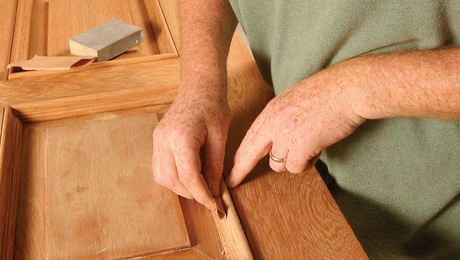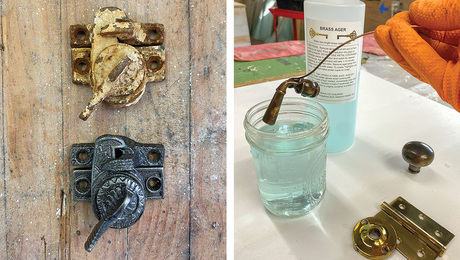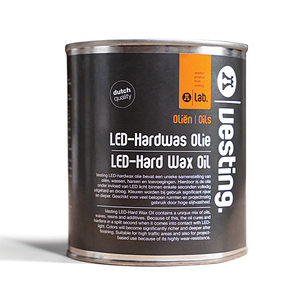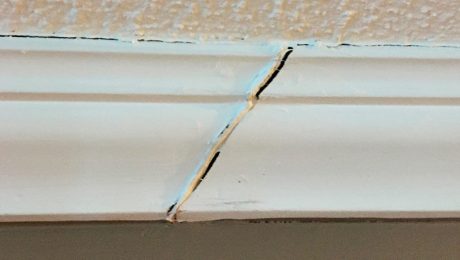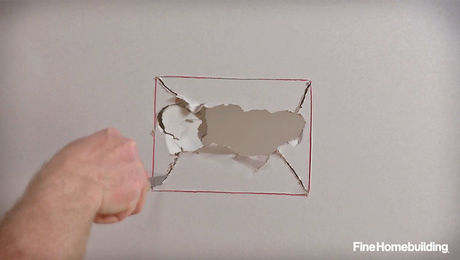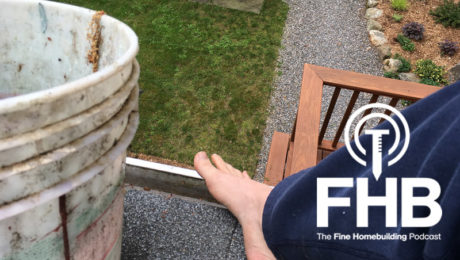Seven Ways to Remove Paint
From scrapers to power strippers and infrared lamps, there are several methods for removing stubborn paint, each with different costs, time requirements, and health-safety considerations.
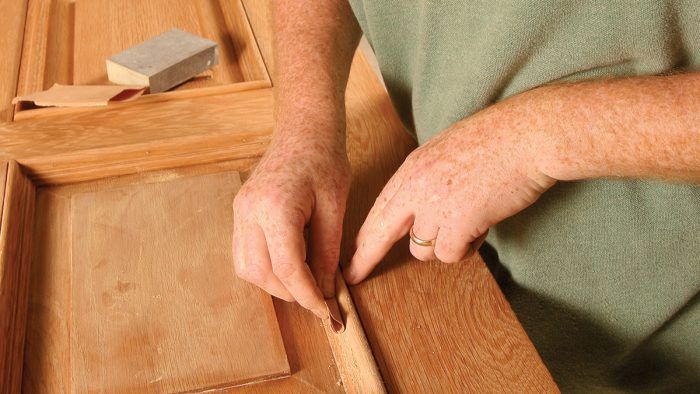
Discover seven methods for removing old paint. From scrapers to power strippers and even infrared lamps, there are lots of options to help you get the job done right. You’ll also get insights into the effectiveness, safety, and necessary precautions to take for each method.
Removing Decades of Paint is a Big Job
On nearly every old house project, at some point you’ll be faced with the unpleasant reality that the thing standing between you and a beautifully refinished piece of original woodworking is about 13 layers of old paint. Removing it can feel like an overwhelming task, especially when you’re looking at a house full of doors, baseboard and casing, built-ins, windows, or exterior siding and trim.
It’s tempting to try to spruce things up with one more fresh coat of paint—we’ve all been there and done that. But there’s no denying that the “just one more coat” mentality only works for so long. Once you’ve come to terms with what must be done, you’re faced with the next decision: How the heck am I going to get all this paint off?
There are a handful of options I’ve used to get the job done, and here I’ll examine them from a few different perspectives, including cost, time and effort, health and safety, and potential harm to the underlying wood. Any one of these options can be successful, or a total failure, and each demands a lot of practice.
I have a few favorites that I recommend as well as others that I’d steer away from. Each of these methods also deserves more explanation than it will get here, but let this treatment at least serve as a high-level look at the options you can consider.
It’s important to remember that removing old paint involves a high risk of exposure to lead paint, requiring proper precautions to ensure safety. I won’t repeat this for each option discussed below, but suffice it to say that in my opinion, there isn’t a removal option covered here that excuses you from wearing a respirator and using a HEPA vac for cleanup.

1.) Scrapers
An old saying goes, “There’s no escaping the scraping,” and I think that’s true for every method on this list. No matter which option you choose, there is always some paint that will need to be touched with a scraper, and some methods—such as heat guns, IR lamps, and chemical strippers—depend on scrapers as part of the process.
Inexpensive “hook scrapers” rely on a sharp steel edge to shave away layers of paint. Carbide scrapers are typically more expensive but have longer-lasting, replaceable blades. Scrapers can be purchased in a wide variety of shapes, and it’s fairly easy to grind your own custom-profile into a steel, flat-blade scraper in order to fit a specific job.
Standard scrapers will leave you with a pile of lead-laden shavings, but there are also ones that can be connected to a vac hose for impressive levels of chip collection. The hand tools usually cost less than $20, though you will need to replace or sharpen the blades to keep the tools working well.
2.) Power Strippers
There are several different brands and types of power tools that you can use to get back to bare wood fairly quickly, with decent dust and chip collection—for example, the Paint Shaver Pro and Metabo Paint Remover, both of which use the body of a right-angle grinder but include carbide knives that are height adjustable.
These tools are run along the painted surface and basically shave the layers of paint off, sucking them into a hose leading to a vacuum. They make short work of removing paint from flat surfaces, which is why you’ll see these tools most often used on clapboards and perhaps flooring and stair treads. When it comes to detailed work or curves, they offer no help at all.
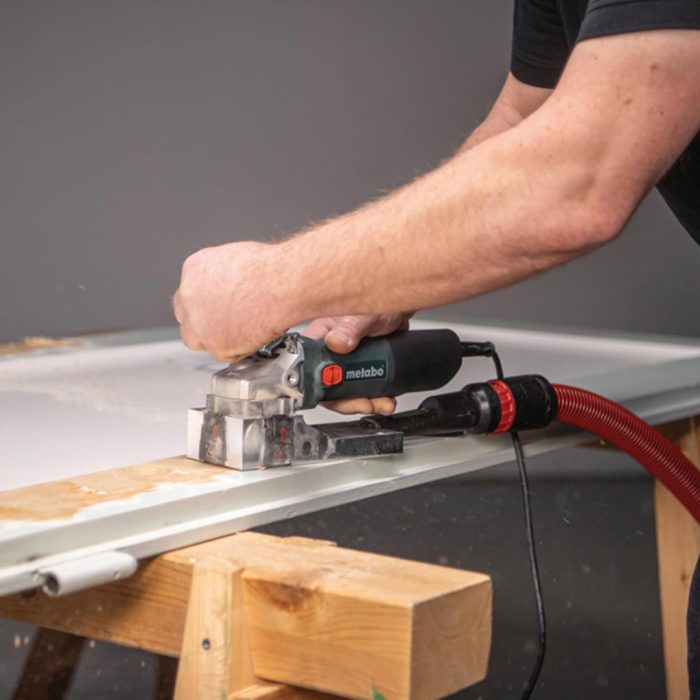
These tools aren’t cheap—typically they sell for $500 to $600 or more—but they hold their value very well, which makes them a worthwhile purchase when you’re faced with a big one-off job but then want to sell the tool to somebody else who is eager to save money on their own project.
The collection of lead dust is modest at best. You will certainly fill a HEPA vac with chips, but you will also be throwing chips in every direction, and so you need to have the site—and yourself—prepared for that.
One final word of caution here: The ability to aggressively remove paint carries an equal risk of aggressively damaging the wood. Believe me when I say there is a learning curve with these tools, and it’s not uncommon to be left with large gouges in the wood surface in just the blink of an eye.
3.) Media Blasting
Hiring a professional to use sand, shells, or some other media to blast the paint from a surface is probably the most tempting paint removal option. Although too messy for any typical interior job, media blasting is a popular option for large exterior jobs, such as siding and trim.
The results are very good in terms of thoroughness of the paint removal and the speed of getting it done. But while the transformation looks impressive from a distance, closer inspection usually reveals blunting of previously crisp edges and erosion of details, which is why most restoration experts caution against this route.
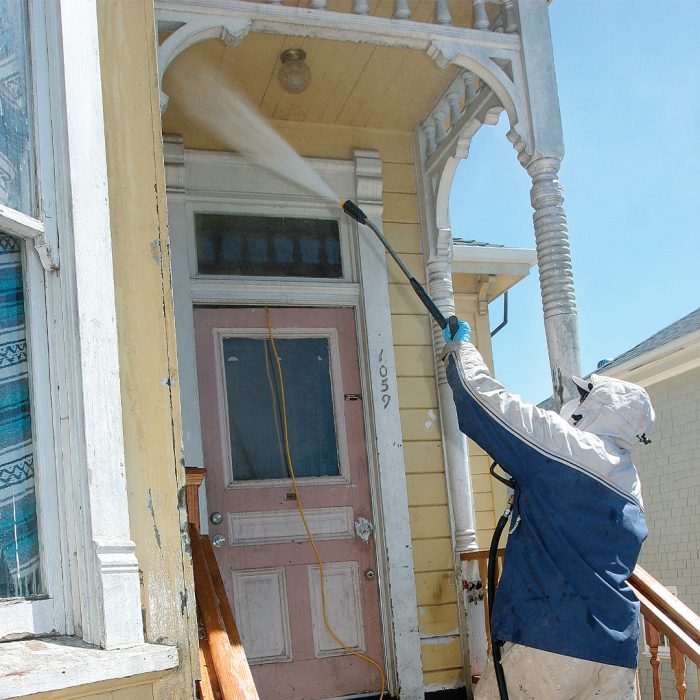
4.) Power Washing
High-pressure water is an incredible thing. With enough pressure, water can be used to cut blocks of steel in half. Portable power washers have much lower pressure ratings, of course, but make no mistake about it—they can pack a serious punch.
Power washers can be rented, which makes them an economical choice for removing paint; they don’t create dust, which makes them a healthy option; and they are more than capable of blowing off multiple layers of old paint.
So what’s not to like? Aside from being useless on interior projects, a power washer makes it nearly impossible to contain the lead paint, which can then leach into the ground. That is the main reason professionals don’t rely on this option.
And while power washers are excellent for “soft washing” the exterior of a house—essentially using a low-pressure application of soapy water—a spray tip powerful enough to remove paint is certainly also powerful enough to gouge the wood.
5.) Heat Guns
Nothing softens old paint like scalding hot air from a heat gun. These tools have been around for a long time and are popular for a lot of reasons. They are inexpensive (prices start at around $20 to $30), lightweight, don’t have much of a learning curve, and—when paired with some elbow grease—do a great job.
There are two big cautions to consider here, though. Lead paint vaporizes when heated to high temperatures, and inhaling lead is possibly the fastest available path to lead poisoning. The other major concern is fire, and I consider that risk to be significant. Old woodworking is dry, dusty, and often hides mouse nests and other highly flammable materials. And this is probably the best time to say that using a propane torch for paint removal is dangerous, outdated, and dumb.
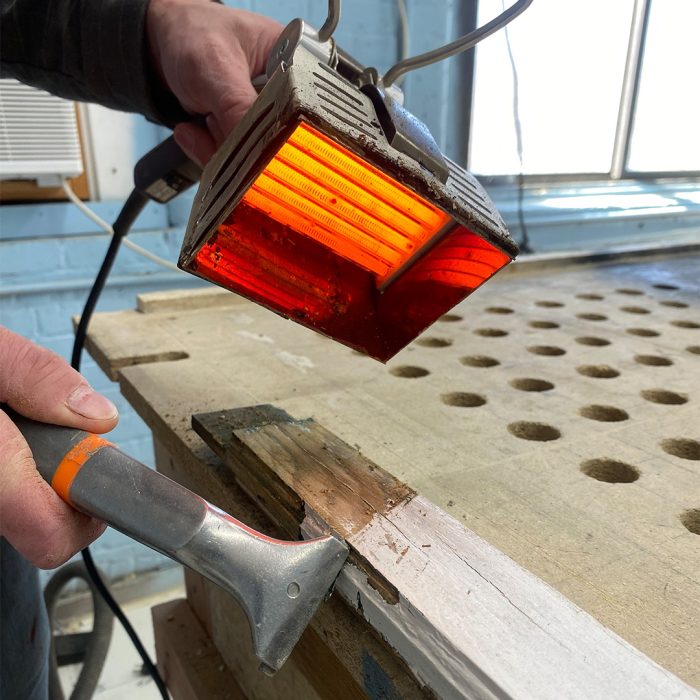
6.) Infrared Lamps
If there is a Goldilocks of paint removal, I think the infrared (IR) lamp is it. Unlike heat guns, which soften the outermost layer or layers of paint, IR lamps penetrate through the layers of paint and heat the wood itself. This makes them very effective on heavily painted surfaces, softening multiple layers of paint in just seconds. An IR lamp is excellent for detail work, and as long as the heater has enough time to work and you take a light touch, this is perhaps the gentlest option for the underlying wood.
Manufacturers are quick to brag that these tools are safer than heat guns because they operate at a lower temperature and won’t vaporize lead. To me, that’s a moot point, because I don’t want to breathe in melting plastic paint any more than I do vaporized lead, and fire is still a serious risk for either tool. The downside is certainly price, because these tools start at $350.
7.) Chemical Strippers
Typically available in gels and pastes, chemical strippers are applied liberally to the painted or finished surface of woodworking and then left to sit over a period of time (which varies) to soften the coatings. After that, the goop is scraped off.
Chemical strippers have been in use for a long time, but I would argue that available options have become less and less effective as the years have passed. That’s probably a good thing, since my experience has shown that the effectiveness of these strippers is directly tied to the toxicity of the chemicals.
Friendlier, lower-VOC options are available, but they work more slowly, if at all. In terms of damage to the wood, chemical strippers are gentle on the details, which is a plus, but they are harsh on the structure of wood. Wood needs to be neutralized before being painted, and plans to stain or clear coat the wood after paint removal may be compromised by stains left by the chemicals.
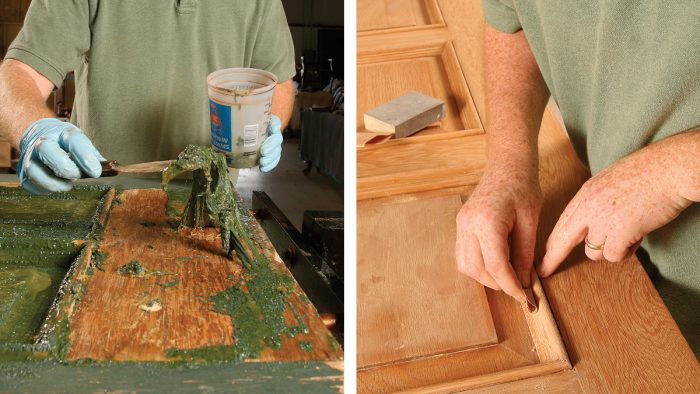
Click here to learn more about working with old houses.
— Justin Fink; owner and operator of Fink & Son Historic Restoration in Connecticut.
RELATED STORIES
